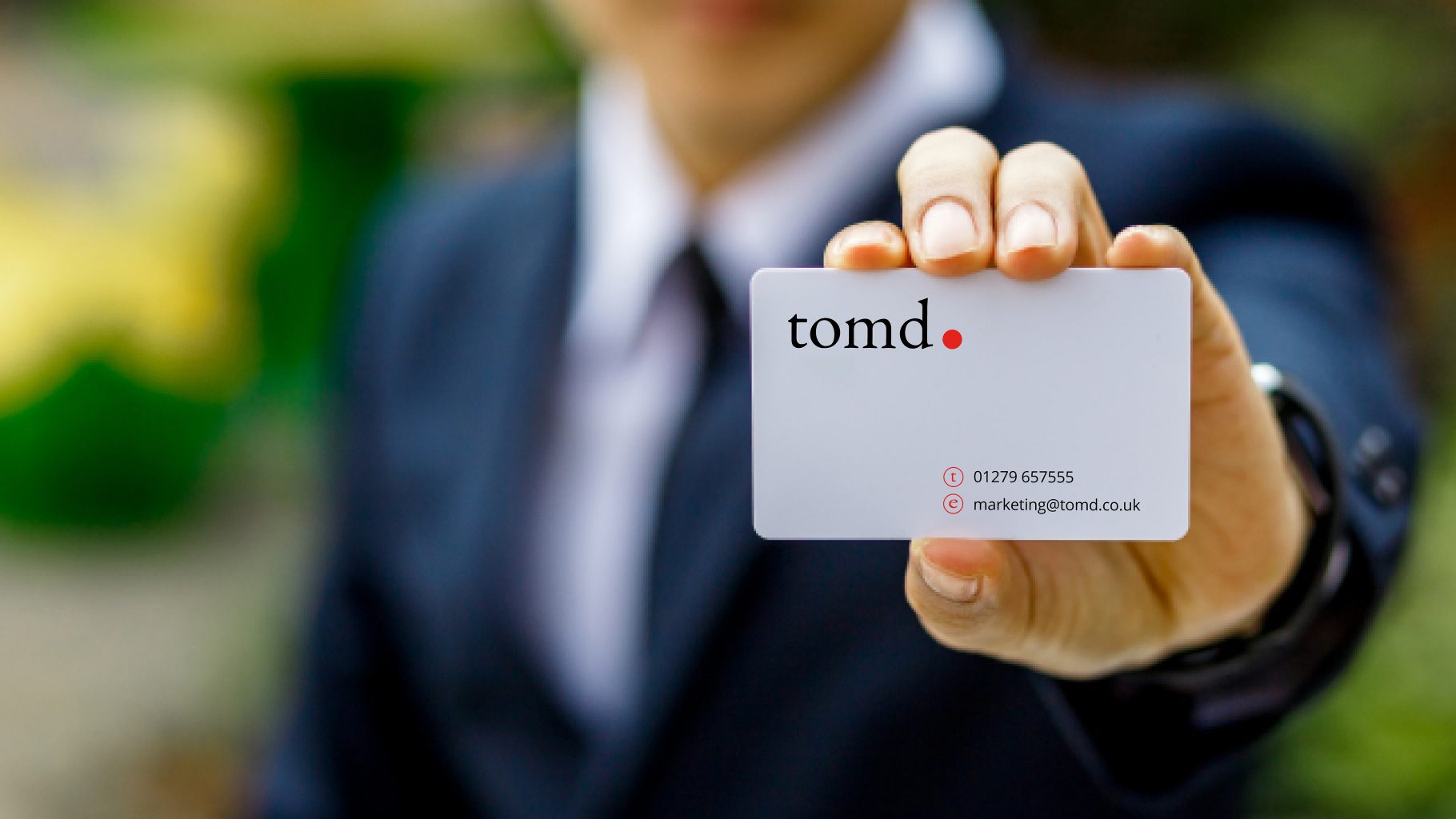
What does your business card say about you?
17th April 2019In a highly digital world, are traditional business cards still needed? Arguably, you can get all the information you need about someone from their email footer, or LinkedIn account but, that said, it’s nice to have something tangible to take away from a meeting. There are also regulatory considerations for those in the legal and financial services industries.
Does my business card really matter to clients?
Yes. Your business card is the lasting impression from a meeting or introduction. It’s an opportunity to make a statement and present your profession. Remember to keep your business card consistent with other branding elements. A high-quality business card will give you credibility and potential clients more confidence in you and your offering.
What should my business card include?
As a bare minimum your business card should contain your name, company logo and contact details, but there are also regulatory elements to consider for certain professions. It’s worth thinking of your cards as an opportunity to communicate your point of difference and why people should use your services. Remember that business cards get passed on through referrals, so they need to have context.
Ensure your business card never contains out-of-date information! If you move offices, your phone number or email address changes, you must update your card to avoid losing credibility and potentially, business opportunities.
Standard or superior cards?
A bit like a CV, people like their business cards to stand out from the crowd. There are lots of different card types to choose from, creating various textures and feels, to showcase your brand in a way that reflects you. However, there’s a risk with textured papers that ink can bleed, which can result in small irregularities with the finished product and many textured papers cannot be laminated which leads on to the next point…
To laminate or not to laminate? That is the question!
Once out of the box, business cards are handled quite frequently and the better an item is protected, the longer it lasts. Lamination makes business cards more robust – protecting them from getting ripped or the colour wearing off. There are different types of lamination. In addition to matt and gloss, there are alternatives such as silk and velvet, which give a quality, smooth finish to your card.
If you decide lamination is not for you, it’s important to carefully consider the design, as solid colour on the reverse can rub on the next card in the pack (unless you have sheets of thin paper inserted between every card, which will add to your costs).
Litho vs digital
Print is a complicated subject! There are two options available – ultimately, it doesn’t matter which you choose, just be aware of the associated considerations.
Litho is the print method of mixing oil and water where artwork is applied to the paper from a smooth plate. Opting for litho ensures a more accurate and consistent method, as the print colours will match. Litho can also be a more cost-effective option, if ordering large quantities, but can be pricey for small batches, and orders take time to complete, as individual plates are made for each page/item you’re printing.
The other option is to print digitally, which is basically a larger version of your household printer. For smaller quantities, digital printing tends to be cheaper, bit there may be small variations in the colour – although this may only be noticeable if you were to lay lots of cards out, side by side. Digital print is also very quick, so your items can be with you to meet a last-minute deadline.
Some companies decide to print their business card templates (the standard elements that appear on each person’s card, e.g. logo, website and office address) litho and then they overprint the personalised details, digitally. We advise clients to weigh up the cost benefits of doing this before proceeding.
Whatever you choose, it’s important to continue with that print method for consistency. If you start mixing litho and digital, the result will be mismatching colours.
Just remember. Keep your cards professional, consistent and always at hand.
By Rachael Caddy and Rita Mendes Gil
